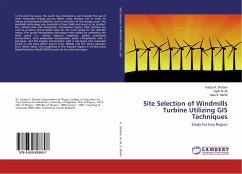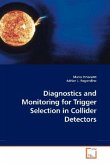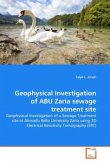In the past few years, the world has witnessed a rush towards the use of clean renewable energy sources (Wind, Solar, Biomass etc) in order to reduce environmental pollution and to reduction of the energy coast. The windmills technology was essential in these fields and need to be studied. The climatic data and Geographic Information System (GIS) facilities are used to produce several levels maps for the wind speed for the selected region. Five spatial interpolation techniques were tested for estimating the wind speed (i.e. inverse distance weighted, global polynomial interpolation, local polynomial interpolation, spline interpolation with 3 sub-types, and the kriging interpolation with 4 sub-types) and evaluated based on the Root Mean Square Error (RMSE) and the Mean Absolute Error (MAE) values. The roughness of the selected regions is verified using Digital Elevation Model (DEM) scenes for the selected region.
Bitte wählen Sie Ihr Anliegen aus.
Rechnungen
Retourenschein anfordern
Bestellstatus
Storno








